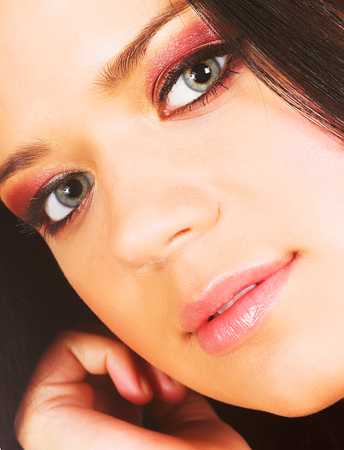Understanding Colour Correcting
Colour correcting has rapidly evolved from a backstage secret to a mainstream beauty essential, particularly across the UK where diverse skin tones and climate-related complexion issues are common. This technique uses carefully chosen tinted products to neutralise specific discolourations, such as redness, dullness, sallowness, or under-eye circles, creating a more even and radiant canvas before applying foundation or concealer. In Britain, where many contend with unpredictable weather, varying humidity, and environmental stressors, colour correcting addresses concerns like rosacea, hyperpigmentation, ashiness in deeper skin tones, and blueish under-eyes—making it especially relevant for the local population.
Common Complexion Concerns Across the UK
| Skin Tone | Typical Concerns |
|---|---|
| Fair | Redness (rosacea), flushed cheeks |
| Medium | Dullness, mild pigmentation |
| Olive | Sallowness (yellow/green undertones) |
| Deep | Ashiness, dark circles, hyperpigmentation |
Why It Matters in the UK Context
The UKs multicultural society means that understanding how to tailor colour correcting techniques to various skin tones is more important than ever. Local beauty enthusiasts are increasingly seeking solutions that address their unique concerns while embracing trends seen on social media and runways alike. By demystifying colour correction and adapting it to British needs—from pale Celtic complexions to rich South Asian and Afro-Caribbean hues—this guide ensures that everyone can achieve their best base yet.
Identifying UK Skin Tones and Common Concerns
The United Kingdom is celebrated for its multicultural population, which brings a beautiful spectrum of skin tones, from the fairest porcelain to the richest ebony. Understanding this diversity is essential when choosing the right colour correcting techniques. British skin tones can be broadly categorised, but it’s important to remember that every individual’s complexion is unique. Below is a guide to typical UK skin tone categories and their common complexion concerns:
| Skin Tone | Description | Prevalent Concerns |
|---|---|---|
| Fair/Porcelain | Pale, often with cool or neutral undertones; common in Northern England and Scotland | Redness (rosacea), visible veins, dullness |
| Light/Beige | Slightly warmer than fair, with pink or yellow undertones; widespread across the UK | Red patches, uneven tone, mild pigmentation |
| Medium/Olive | Tanned appearance, olive or golden undertones; prevalent among Mediterranean heritage Britons | Sallowness (yellowish cast), hyperpigmentation, dark circles |
| Tan/Caramel | Warm brown or golden shades; common in South Asian and Middle Eastern communities in the UK | Dark circles, pigmentation spots, dullness |
| Deep/Ebony | Rich brown to deep black tones; common among Black British communities | Hyperpigmentation, ashiness, uneven texture |
Each of these skin tones may face distinct challenges when it comes to achieving an even base. Redness from cold weather or sensitive skin is a frequent concern in the UK’s climate, while sallowness and pigmentation issues are often observed in medium to deeper complexions. By recognising your specific skin tone and its associated concerns, you’re well-equipped to choose the most effective colour correcting methods tailored for the British beauty landscape.
![]()
3. Choosing the Right Colour Correctors
When it comes to colour correcting, selecting the correct shade and formulation is crucial for achieving a seamless base, especially considering the diverse range of UK skin tones. The British market offers an impressive array of options, so understanding how to match your corrector to your complexion ensures flawless results. Below is a handy table summarising which shades best address specific concerns across typical UK skin undertones:
| Concern | Ideal Corrector Shade | Best For | Recommended UK Brands |
|---|---|---|---|
| Redness (rosacea, blemishes) | Green | Fair to medium skin with pink or cool undertones | No7, Revolution Pro, Barry M |
| Dark Circles (blue/purple hues) | Peach/Orange | Medium to deep skin tones; choose lighter peach for fair skin | Sleek MakeUP, Charlotte Tilbury, Collection Cosmetics |
| Dullness/Sallowness | Purple/Lavender | Light to medium skin with yellow undertones | Bourjois, Rimmel London |
| Hyperpigmentation/Brown Spots | Yellow | All skin tones, but particularly effective on olive and Asian complexions | LOréal Paris, Fenty Beauty (Harvey Nichols) |
Selecting the Right Formulation
The British climate can fluctuate between damp winters and humid summers, so choosing the correct texture is just as important as picking your shade. Cream formulas are ideal for normal to dry skin and provide richer coverage—perfect for tackling stubborn pigmentation during colder months. Liquids work well on combination or oily skin types and blend seamlessly under lightweight foundations. Stick formats offer convenience for touch-ups on-the-go—a must-have in any commuter’s makeup bag.
Top Tips for British Skin Tones:
- If you have very fair or porcelain skin (common in Northern England and Scotland), opt for pastel green or light peach shades that won’t overpower your natural tone.
- Darker complexions benefit from deeper orange or red-based correctors—brands like Sleek MakeUP excel in this area with inclusive ranges.
- Always patch test new products in-store at Boots or Superdrug when possible, as lighting can impact shade perception.
Pro Tip:
Layer correctors sparingly under concealer and foundation—British brands often formulate their products to suit local lighting conditions and typical weather wear. Experiment with formulations from trusted UK brands for the most harmonious finish tailored to your unique complexion.
4. Step-by-Step Application Technique
Achieving a flawless, natural complexion with colour correcting starts with the right technique—especially when factoring in the UK’s changeable weather and fast-paced lifestyle. Here’s a detailed, professional approach to ensure your base looks seamless and lasts throughout damp mornings or unexpected heatwaves.
Preparation: Setting the Perfect Canvas
Before reaching for any correctors, start with freshly cleansed and moisturised skin. In the UK, humidity and rain can affect makeup longevity, so opt for a lightweight, hydrating primer that suits your skin type—this helps lock in correction without slipping or caking.
Choosing Your Corrector Formula
| Skin Concern | Recommended Corrector Type | Best for UK Weather |
|---|---|---|
| Redness (Rosacea/Blemishes) | Green Cream or Liquid | Creams for dry/cold days, liquids for humid days |
| Dark Circles (Blue/Purple Tones) | Peach/Orange Liquid | Liquids for lighter feel, especially during summer |
| Dullness/Sallowness | Purple/Lavender Primer | Lightweight primers suitable for all seasons |
| Pigmentation/Dark Spots | Yellow Cream or Stick | Creams for extra coverage on unpredictable days |
The Application Process: A British Routine-Friendly Guide
- Sparingly Apply Product: Dab small amounts of corrector directly onto targeted areas using a clean fingertip or synthetic brush. British makeup trends favour subtlety over heavy coverage, so less is more.
- Blend Gently: Using a damp beauty sponge or brush, softly tap to blend the edges into your skin. Focus on feathering out rather than rubbing in to maintain precision and prevent patchiness—crucial for the UK’s often close-up lighting.
- Let it Set: Allow the corrector to sit for at least 60 seconds. This step is key in the UK’s colder months when makeup can shift more easily due to scarves and high collars.
- Apply Foundation: Layer a lightweight, buildable foundation over corrected areas with a stippling motion. Avoid dragging the product to keep the correction intact; this ensures even coverage without disturbing your hard work.
- Finish with Setting Powder: Lightly dust a translucent powder over the T-zone and corrected zones. This helps combat humidity in warmer southern regions or oiliness during rainy spells up north.
- Mist to Set: Finish with a setting spray designed for British weather—look for formulas offering hydration and longevity to keep your complexion fresh from the Tube commute to evening socials.
Troubleshooting Common Issues
- Cakey Finish? Use less product and blend thoroughly; excess corrector is more noticeable under natural daylight common in UK homes and offices.
- Poor Longevity? Always prep skin well and choose weather-appropriate textures as shown above.
- Pigment Peeking Through? Spot-correct after foundation with minimal product—British beauty routines value touch-ups that don’t look obvious.
This step-by-step technique ensures colour correcting becomes an effortless part of your daily routine—helping you face every British forecast with confidence and style.
5. Recommended Products and Where to Shop in the UK
Choosing the right colour correcting products is essential for achieving a flawless complexion, especially when considering the diverse range of skin tones found across the UK. Whether you’re after something easily accessible on the high street or prefer to support niche indie brands, the UK beauty scene offers plenty of options. Below is a curated list of standout products and where you can find them, catering to both beginners and seasoned makeup enthusiasts.
High Street Heroes
| Product | Description | Best For | Where to Buy |
|---|---|---|---|
| Collection Lasting Perfection Colour Corrector | Affordable, creamy formula with shades for redness, dullness, and dark circles. | Everyday quick fixes | Boots, Superdrug |
| Rimmel Insta Conceal & Correct Palette | Compact palette with three colour-correcting creams for custom blending. | On-the-go touch-ups | Boots, Superdrug, Tesco |
| L’Oréal Paris Infallible More Than Concealer (Peach & Green) | Highly pigmented liquid correctors targeting blue undertones and redness. | Darker circles and rosacea-prone skin | Boots, Lookfantastic, ASOS |
Cult Indie & Pro Finds
| Product | Description | Best For | Where to Buy |
|---|---|---|---|
| NARS Radiant Creamy Colour Corrector | Lightweight yet buildable; excellent for layering under concealer. | Natural finish lovers, all skin tones | Space NK, Selfridges, Cult Beauty |
| Sleek MakeUP Colour Corrector Palette | A budget-friendly palette with six shades for multi-purpose correction. | MUA beginners or experimenting with colour theory | Sleekmakeup.com, Boots, Superdrug |
| BECCA Under Eye Brightening Corrector (now by Smashbox) | Cult-favourite pinky peach corrector revived by Smashbox after BECCA’s closure. | Mature or tired skin needing luminosity boost | Cult Beauty, Boots Online, John Lewis Online |
| P.Louise Base Pro Coloured Bases (various shades) | Creamy pigment-rich bases that double as correctors for creative looks. | Bolder corrections and artistry looks for all tones | P.Louise.co.uk, Beauty Bay |
Tried-and-True Shopping Tips for UK Shoppers:
- Check In-Store Availability: High street stores like Boots and Superdrug often carry testers so you can match your undertone before purchasing.
- Look Out for Multi-Buy Offers: UK retailers frequently run promotions on colour correcting ranges—perfect for building a kit on a budget.
- Explore Niche Boutiques: For indie brands or pro-grade formulas, check out online platforms such as Beauty Bay and Cult Beauty that ship within the UK.
- Sustainability Matters: Many British brands now focus on vegan and cruelty-free formulations—look for certifications if this is important to you.
- Diversify Your Toolkit: Don’t be afraid to mix high street bargains with luxury finds to create a routine tailored to your unique skin tone needs.
This selection ensures that no matter your budget or preferred shopping spot—from bustling Oxford Street flagships to local chemists—you’ll find a colour corrector that’s just right for your complexion and lifestyle.
6. Frequently Asked Questions: UK Colour Correcting Edition
Answers to Common Queries from British Makeup Enthusiasts
When it comes to colour correcting, British beauty lovers often have specific concerns shaped by the UK’s unique climate and diverse skin tones. Below are answers to the most frequently asked questions to help you master colour correction in true British style.
Q1: Which colour corrector works best for pale or fair UK skin tones?
Pale or fair complexions in the UK often struggle with redness and under-eye circles. A green corrector is ideal for neutralising redness, while a peach or salmon shade helps counteract blue-toned under-eye darkness.
Q2: How can I make my colour-corrected makeup last through rainy or humid British weather?
Longevity is key given the unpredictable British weather. Here are some top tips:
| Step | Product Recommendation | Why It Works |
|---|---|---|
| Prep | Hydrating primer (suitable for your skin type) | Creates a smooth base and helps makeup grip |
| Set | Translucent setting powder | Locks in creams/liquids and prevents slipping |
| Finish | Setting spray (preferably mattifying for oily skin) | Adds extra hold against humidity and rain |
Q3: What’s the safest approach for sensitive or reactive skin common in the UK?
If you have sensitive skin, opt for fragrance-free, hypoallergenic colour correctors. Mineral-based formulas tend to be gentler. Always patch test new products on your jawline before full application to avoid irritation.
Q4: Can I use the same corrector shade year-round despite seasonal changes?
Your skin tone may shift slightly with sun exposure during the British summer or become paler in winter. You might need to adjust your corrector shade accordingly—deeper peach/orange tones in summer, lighter pastel tones in winter.
Avoiding Common Pitfalls in Colour Correcting
- Over-application: Use a light hand; too much product can look cakey.
- Poor blending: Always blend edges seamlessly using a damp sponge or brush.
- Mismatched undertones: Make sure your corrector suits both your concern and your skin’s undertone for the most natural result.
- No setting: Failing to set cream or liquid correctors reduces longevity, especially in damp climates like the UK.
Navigating colour correcting as a British beauty enthusiast doesn’t have to be daunting. With these tailored tips, you can confidently address your complexion concerns while keeping your look fresh—rain or shine.


